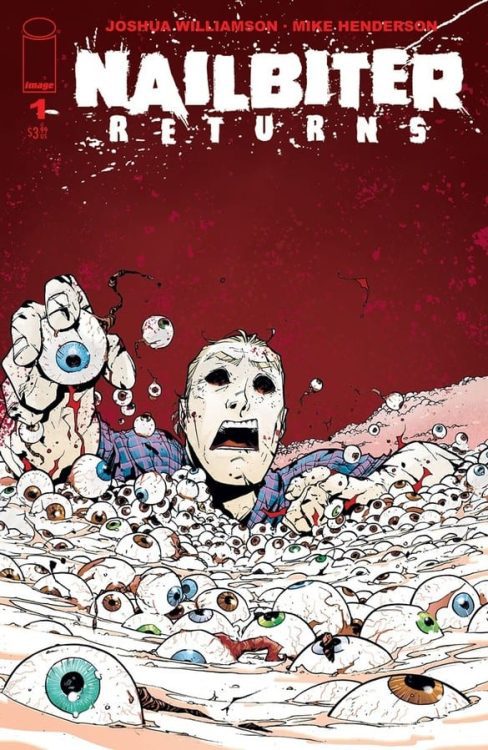Nailbiter: Returns #1 hit your local comic book shop early this month and issue two drops July 1, thanks to Image Comics, Monkeys Fighting Robots was able to chat with the creators; writer Joshua Williamson and artist Mike Henderson. The duo talked about what goes into making a good horror sequel.
About Nailbiter: Returns:
Sixteen of the world’s worst serial killers were all born in the same small town…but Agent Finch and Sheriff Crane solved and buried that mystery. Didn’t they? Violent copycat murders imitating the infamous Buckaroo Butchers have begun in Portland, Oregon, and if Finch wants the killings to stop, he’ll have to team up with the daughter of the Nailbiter himself.
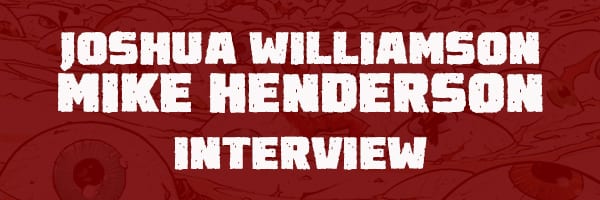
MFR ON YOUTUBE (latest video)
Help us reach 5K Subs!
MFR: Joshua and Mike – As soon as I hear about a horror sequel, the three rule pop in my head:
- The body count is always bigger.
- The death scenes are always much more elaborate, with more blood and gore.
- Never, ever, under any circumstances, assume the killer is dead.
How have the rules of SCREAM 2 influenced NAILBITER: RETURNS?
WILLIAMSON: 100% YES. Of course. And yeah, we’ll have all of that. We do get a bit crazier in this volume. And WAY more action. I feel like some of the best horror films added a lot of action in the sequels, and we did that here as well.
HENDERSON: We have a LOT of ground to cover to rack up a bigger body count than the original Nailbiter, but I think we’re in observance of the latter two rules. RETURNS is about making the reader say “ick” out loud, but a different sort of “ick” than the original.
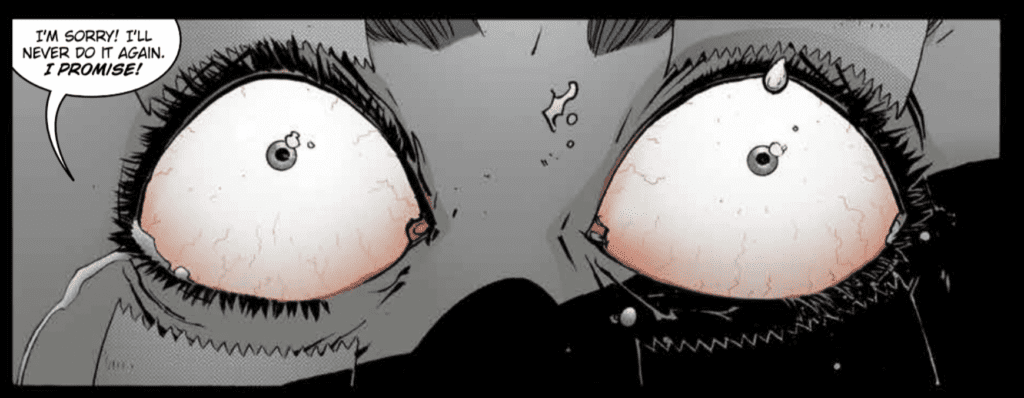
MFR: Joshua, what is the mental transition like going from the moral compass of the DC Universe (The Flash) to a slasher horror comic (NAILBITER: RETURNS)?
WILLIAMSON: Going back to Nailbiter is like going home. It’s home cooking for me.
I usually separate the two books out by weeks. If I had to work on them both on the same day, it would be hard. Because they are SO different in tone.
So, I usually have a week set aside from Nailbiter. Watch some horror. Read some horror. And all my books have playlists that help get my back in that state of mind.
It’s the same with Flash. But I’ve also written more of Flash than anything else in my life, so I know how to dive right back into that mindset and world when it’s the right time.
Both books are driven by a voice. Nailbiter is Warrens, and Flash’s is Barry. Once I can hear their voices in my head, I’m ready to roll.

MFR: Joshua and Mike – The background of the panels go from dark to light, and then back to dark. Can you talk about the color palette Adam Guzowski used for the first issue?
WILLIAMSON: Mike and Adam have worked with each other for years now, and have a good relationship and communicate well. My only real direction on this arc was to make sure we spent time on scenes in the daylight, as the idea of horror in the sun is important to this story.
HENDERSON: We had settled into a familiar palette over the 30 issues of NAILBITER and tried to shift a bit in RETURNS. I remember discussing a warmer, Halloween-esque palette with Adam, but he does a great job of using what the mood calls for. We also switch back and forth between white and black panel gutters, at times using black to close in a claustrophobic way on the reader and white to open things up and relieve tension when it’s called for.

MFR: Mike, I read the book in digital form, so I just scrolled down to read, but I noticed how you used the page turn to set up scares. Can you talk about creating horror in comics?
HENDERSON: The page turn is one of the more potent tools in comics, and one of the few in horror comics that are transferable from film. It can work as a reveal or a jump scare in a way that a panel to panel sequence can’t and is usually the difference between eerie horror and the kind of slasher horror that team NAILBITER specializes in. It’s tricky stuff!
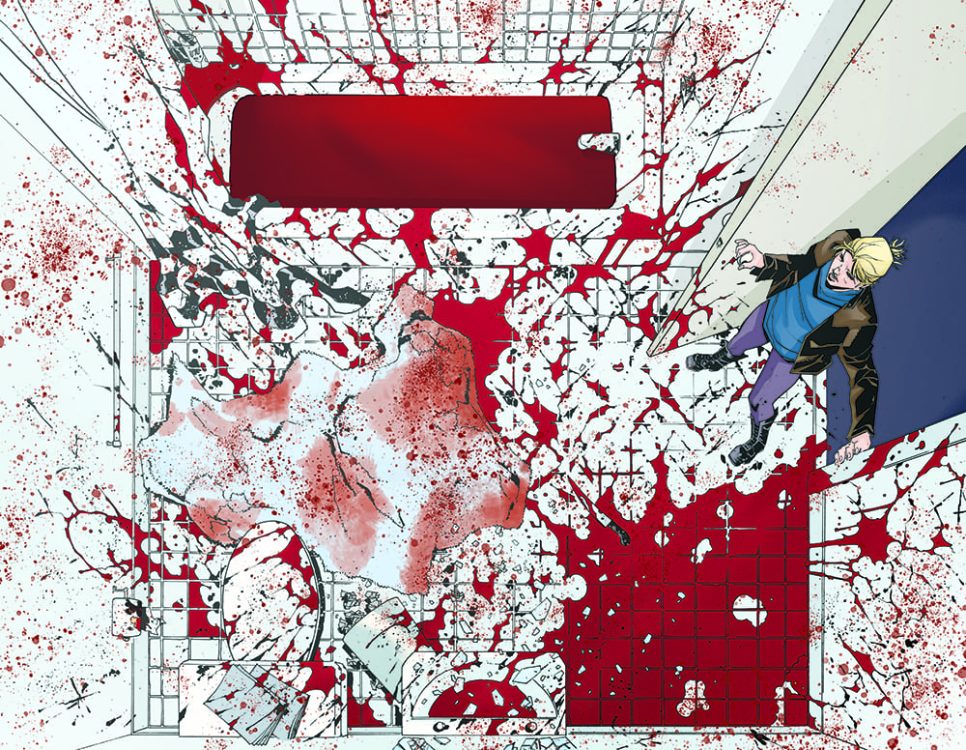
MFR: Joshua, what was your reaction to seeing the finished version of the bloody bathroom splash page (above) for the first time?
WILLIAMSON: That moment is actually in Issue 30 as well. We showed it twice there, and Mike copied that moment to tie it all together. My FIRST reaction was… “MORE BLOOD.” And then we added more blood. But then because it does connect to the original series it was a nice sign that we were on the right path with the story.
MFR: Mike, the bloody bathroom splash page is brutal elegance; can you breakdown this page and what you were trying to accomplish?
HENDERSON: This was in part a way to throw new readers into the deep end of Nailbiter, but also reward everyone who’s been with us since the original series. But, as always, I had to ratchet whatever we did from the first time from 10 to 12. Then hand it over to Adam to ratchet it up to 14 or so. It’s always a team effort.
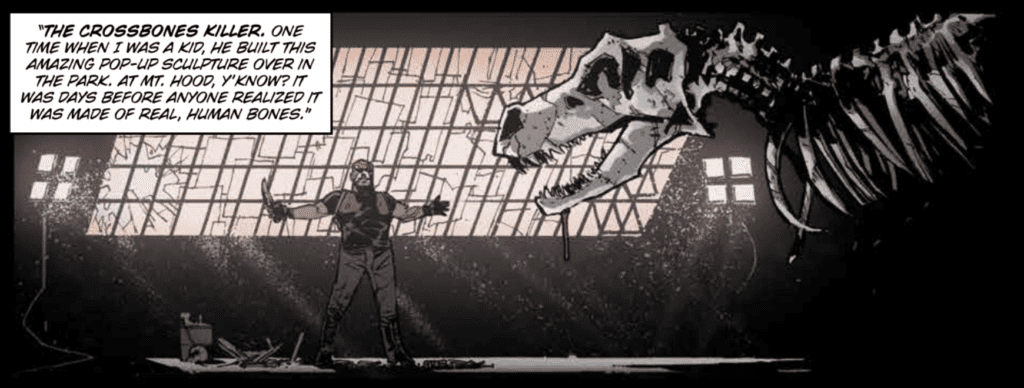
MFR: Joshua and Mike – The musical score in a horror film is a big factor in building tension. How do you create tension in a comic book?
WILLIAMSON: I think about this a LOT. A LOT. I love horror films. And I think about what happened with the original Halloween a lot. How John Carpenter would do test screenings and showed the producers a cut and they hated it. Then he quickly put together the classic score and theme, and placed it on the movie. The producers thought he did a huge edit and felt it was MUCH scarier. But it was JUST the music added. It does speak to how the sound is important. SO instead, we play with the silence. The lack of any sound. Play with the fact that the reader can’t hear what the characters hear. It’s fun.
HENDERSON: It’s a tricky balance, slowly ramping up the sense of dread in a comic. I think one of our not so secret weapons is humor, which I think lets the reader take a breath every once in a while before we start squeezing the breath out of them again. Why can’t we have a musical score??
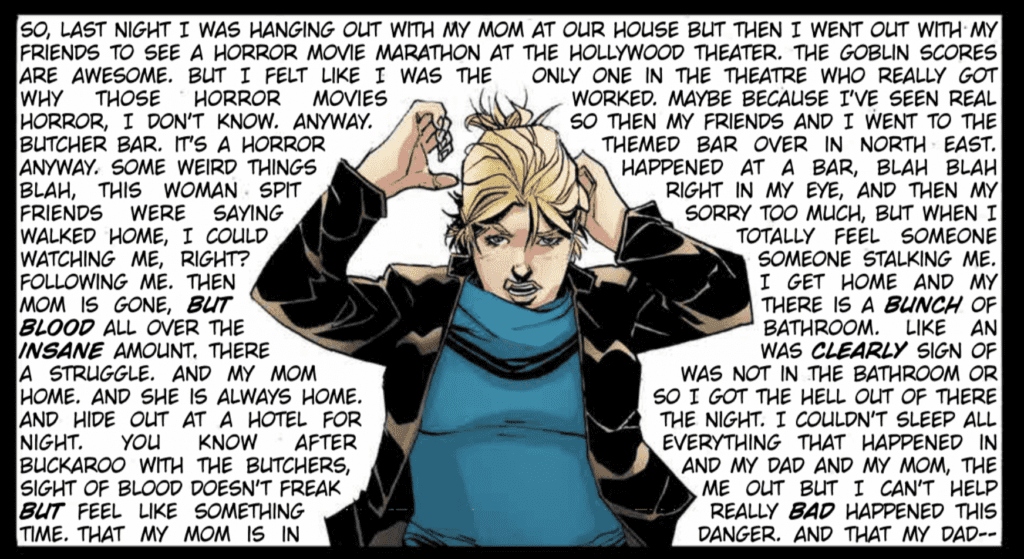
MFR: Joshua and John J. Hill – The panel above stands out from the rest in NAILBITER: RETURNS #1. How do you get me to read it very fast and be out of breath by the end of the panel just like Alice?
WILLIAMSON: Because John is great at his job and found a way to take a crazy idea and make it work. Haha. My original plan was to do it as one HUGE word balloon, but Mike had the idea of having it fill the background of the panel. The first pass and lettering it wasn’t working, and I had to add MORE dialogue to get the idea across. John made the madness there work like he always does.
JOHN J HILL: When you remove the background and any familiar devices like captions and word balloons, wall to wall text behind the character(s) becomes overwhelming and, in some ways gives off a claustrophobic vibe. It’s been done many times and isn’t innovative or anything, but definitely works when you’re trying to convey a sense of bombardment. This was Josh’s suggestion; I just did my best to make it work with what Mike and Adam did.
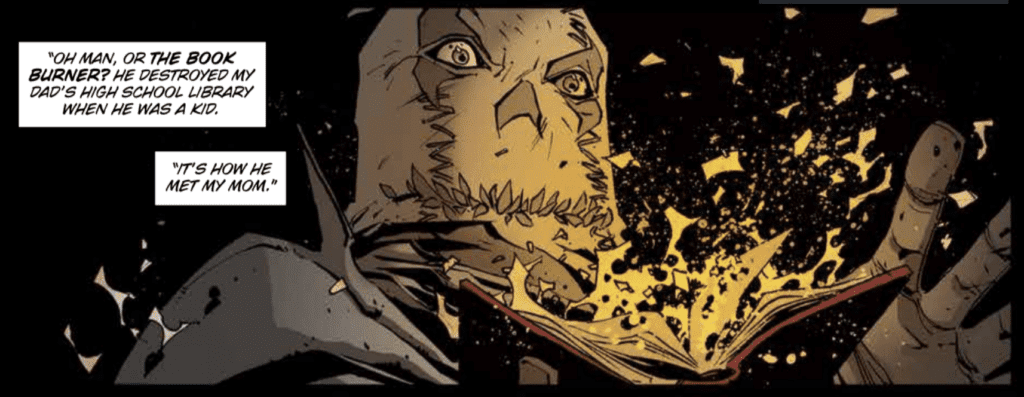
MFR: How much world-building is involved with NAILBITER, and how far do you see the series going? Are we talking FRIDAY THE 13th territory (11 films)?
WILLIAMSON: We have a plan for an “ending.” I don’t see us going THAT deep into the series. We won’t return that many times.
As for World-building. A lot of it is about the cast and then building out from there. Having fun with the horror. The main world building was done in the first series. We actually have a lot of behind the scenes world-building and history that never makes it into the book or on the page. Which might help the book feel lived in.
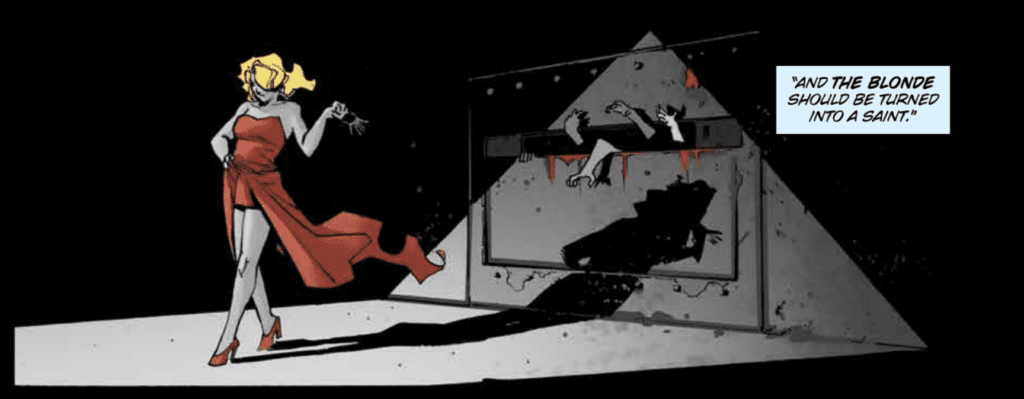
MFR: Joshua and Mike – The events of COVID-19 and loss of life is a massive moment in time. How will this impact your future creative process and or work?
WILLIAMSON: It’s hard in a lot of ways. Thankfully, I’m busier than ever. Able to find ways to focus there. A lot of people depend on me to get the scripts in, which allows them to work, so I’m doing the best I can to keep the trains running. I had a few creator-owned books I wanted to do in the future that actually leaned a bit too close to some of the things we’re experiencing now. Not exact. But feels…too close. So those went on the back burner for a long time. Otherwise, I’m really busy with work and trying to keep moving. Thankful for the work and the creative opportunities and output I have now.
HENDERSON: The loss of life and the huge changes in everyday life have put my process into stark perspective. I still love working traditionally and have no plans to ever stop fully, but if nothing else, with a new family, it has highlighted just how important my time is. Working on some projects digitally could help me take back some of that. But for my work overall, it’s also put in stark contrast the work we own and the work we don’t, and just how valuable a balance of the two can be to having any kind of longevity in this era of comics.
MFR: Joshua and Mike – Furthermore, with the COVID-19, the comic book industry is at an evolutionary moment. What do you think the comic book industry will look like in 10 years?
WILLIAMSON: Hopefully, something NEW and growing. My first job was at a comic book store when I was a kid, 25 years ago, and I’ve seen the industry go through some crazy times. Nothing like this. This feels new and we’ll never go back to what was before. But I believe in comics and in the people who make them. There is no reason to go back to “normal.” We can work to create a better future in comics. It’s interesting how much comics has changed in the last ten, twenty years. But I do know I’ll still be making comics.
HENDERSON: Now that Diamond has reasserted itself as more or less the sole distributor for the entire industry, I expect it will look very much the same for creators in terms of how vulnerable we are to the weaknesses of a business model that is essentially a line of dominos. But, I think, if creators are smart and organized (and a little lucky), we might be able to make sure we don’t go down with the ship the next time it starts sinking. I don’t pretend to have the Marshall Plan for comics but the point remains: great books are still going to be getting made by great creators, but the health of the industry, especially its most vulnerable members, hinges heavily on making sure this never happens again.
MFR: Thank you again for your time, and best of luck with NAILBITER: RETURNS!
Did you read Nailbiter, are you excited for the sequel? Comment below with your thoughts.
